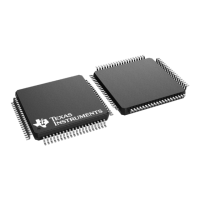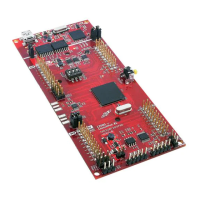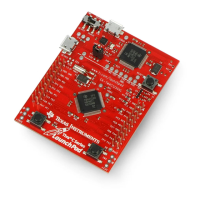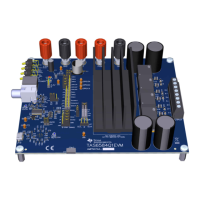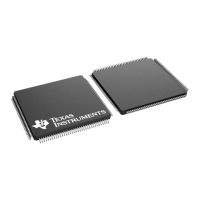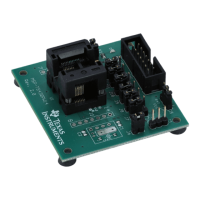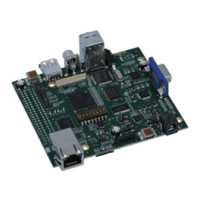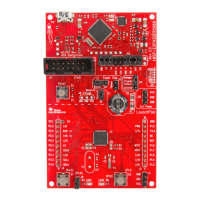ePWM Submodules
www.ti.com
2004
SPNU563A–March 2018
Submit Documentation Feedback
Copyright © 2018, Texas Instruments Incorporated
Enhanced Pulse Width Modulator (ePWM) Module
Table 35-4. Key Time-Base Signals (continued)
Signal Description
CTR = CMPB Time-base counter equal to active counter-compare B register (TBCTR = CMPB).
This event is generated by the counter-compare submodule and used by the synchronization out logic
CTR_dir Time-base counter direction.
Indicates the current direction of the ePWM's time-base counter. This signal is high when the counter is
increasing and low when it is decreasing.
CTR_max Time-base counter equal max value. (TBCTR = 0xFFFF)
Generated event when the TBCTR value reaches its maximum value. This signal is only used only as a status
bit
TBCLK Time-base clock.
This is a prescaled version of the system clock (VCLK3) and is used by all submodules within the ePWM. This
clock determines the rate at which time-base counter increments or decrements.
35.2.2.3 Calculating PWM Period and Frequency
The frequency of PWM events is controlled by the time-base period (TBPRD) register and the mode of the
time-base counter. Figure 35-5 shows the period (T
pwm
) and frequency (F
pwm
) relationships for the up-
count, down-count, and up-down-count time-base counter modes when the period is set to 4 (TBPRD =
4). The time increment for each step is defined by the time-base clock (TBCLK) which is a prescaled
version of the system clock (VCLK3).
The time-base counter has three modes of operation selected by the time-base control register (TBCTL):
• Up-Down-Count Mode:
In up-down-count mode, the time-base counter starts from zero and increments until the period
(TBPRD) value is reached. When the period value is reached, the time-base counter then decrements
until it reaches zero. At this point the counter repeats the pattern and begins to increment.
• Up-Count Mode:
In this mode, the time-base counter starts from zero and increments until it reaches the value in the
period register (TBPRD). When the period value is reached, the time-base counter resets to zero and
begins to increment once again.
• Down-Count Mode:
In down-count mode, the time-base counter starts from the period (TBPRD) value and decrements until
it reaches zero. When it reaches zero, the time-base counter is reset to the period value and it begins
to decrement once again.
35.2.2.3.1 Time-Base Period Shadow Register
The time-base period register (TBPRD) has a shadow register. Shadowing allows the register update to
be synchronized with the hardware. The following definitions are used to describe all shadow registers in
the ePWM module:
• Active Register
The active register controls the hardware and is responsible for actions that the hardware causes or
invokes.
• Shadow Register
The shadow register buffers or provides a temporary holding location for the active register. It has no
direct effect on any control hardware. At a strategic point in time the shadow register's content is
transferred to the active register. This prevents corruption or spurious operation due to the register
being asynchronously modified by software.
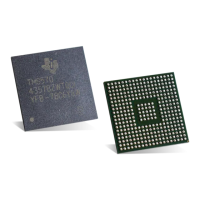
